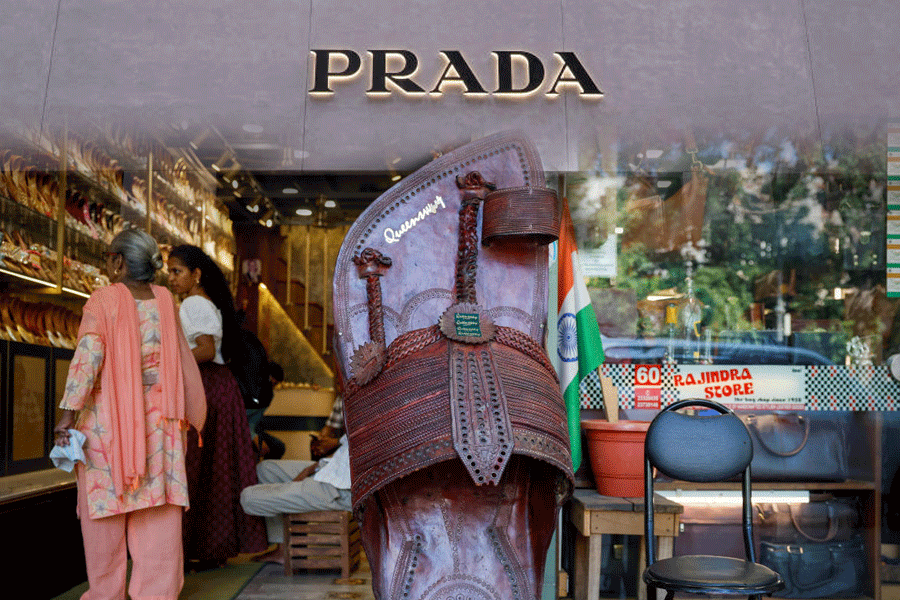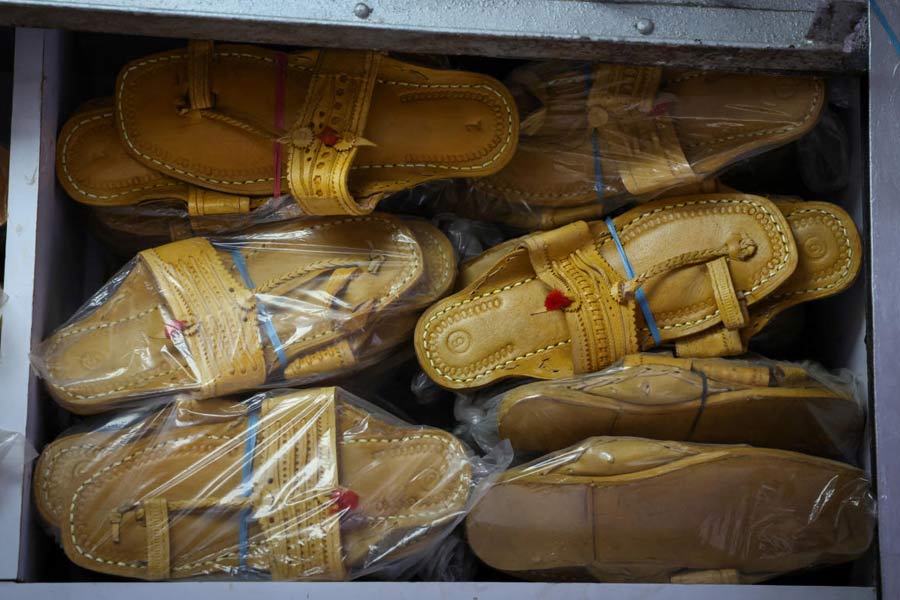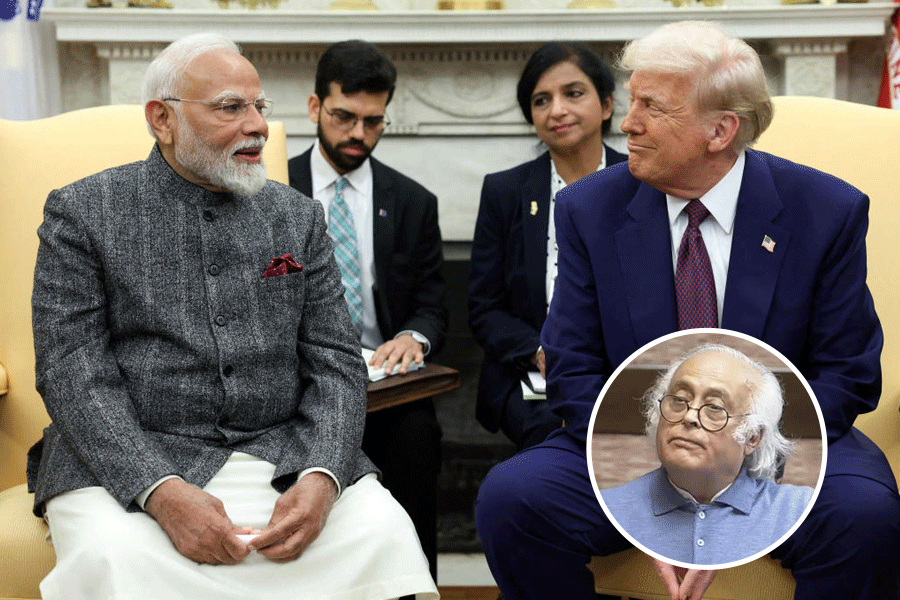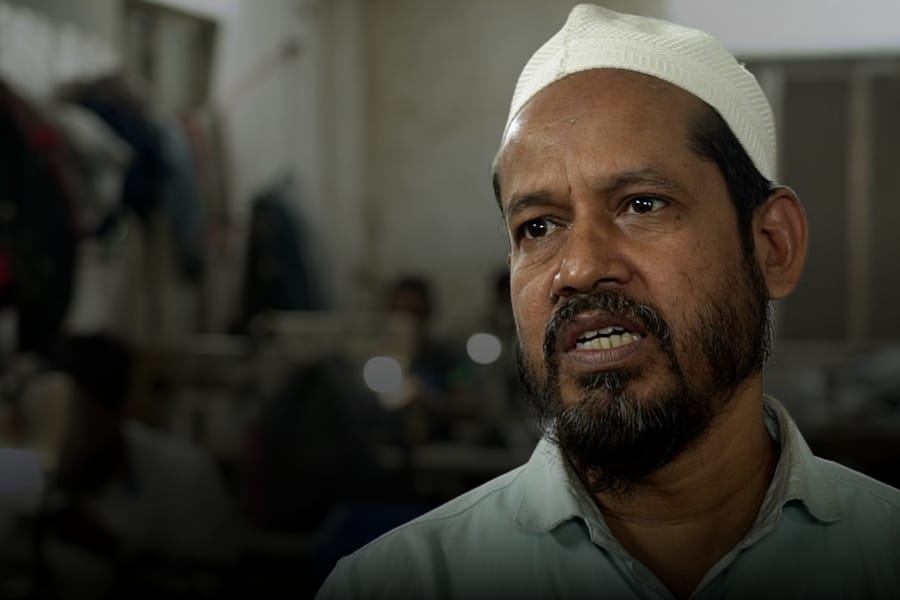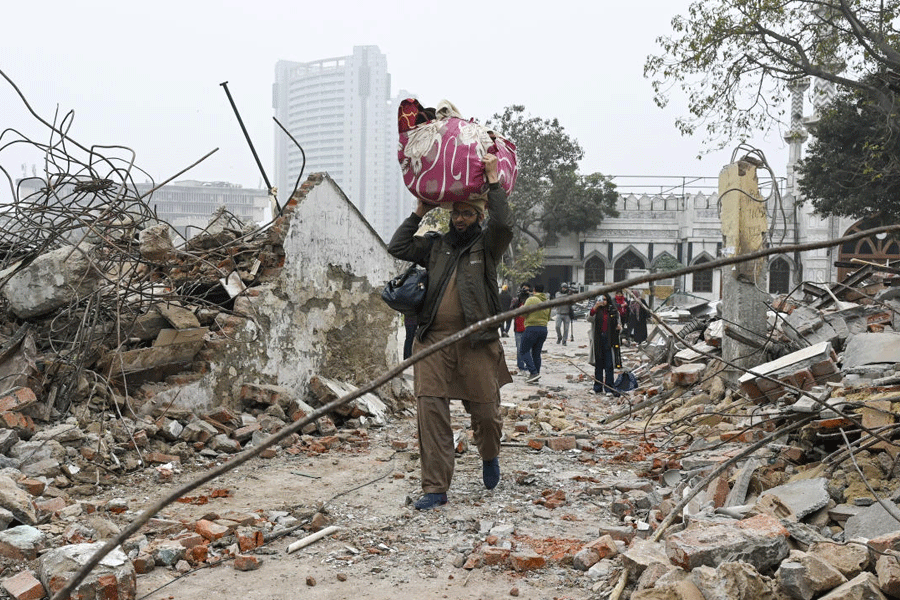When is a Kolhapuri chappal not a Kolhapuri chappal? Apparently, when the footwear glides down a Milan runway on the feet of a top model, is stitched by Italian cobblers, and rebranded as “open-toed flat leather sandals” — with a hefty price tag, courtesy of Prada.
Yes, the Italian fashion house appears to have taken India’s most no-nonsense footwear — the leather slip-ons worn for centuries by farmers, poets and professors — and given them the full couture glow-up. Heritage, though, is not included.
In its finest fashion-speak, Prada described the sandals showcased at its show this month as “open-toed flat leather sandals.” In true luxury tradition, it slapped on an $800 price tag.
All this, but — shhhh — not a whisper about Kolhapur, the Maharashtrian city where these iconic sandals with their distinctive braided T-strap have been handcrafted since the 12th century, and where you can still buy a pair for around $12.
Indians, never shy about defending their cultural turf, were quick to spot what looked like a textbook case of appropriation. The sandals weren’t inspired by Indian design — they were Indian design, airlifted, relabelled, and marked up by a head-spinning amount. Outrage on social media was swift, with one user branding it “new age colonialism in couture.”
Prada’s silence sparked a loud backlash. The Maharashtra Chamber of Commerce, Industry and Agriculture (MACCIA) stepped in, accusing the fashion house of high-end cultural appropriation — remixing India’s legacy, minus the credit.
The chamber’s president, Lalit Gandhi, observed mildly in a letter to Prada, with admirable restraint: “The collection includes footwear designs that bear a close resemblance to Kolhapuri sandals.” He added that the traditional handcrafted leather sandal had been awarded ‘geographical indication’ status by the government of India in 2019 — a tag that verifies a product’s origin in a specific place.
Initially, Prada tried the old runway sidestep. But eventually, the brand admitted the obvious.
“We acknowledge the sandals are inspired by traditional Indian handcrafted footwear, with a centuries-old heritage,” wrote Lorenzo Bertelli, Prada’s head of corporate social responsibility (and heir apparent to the brand), in what seemed to be a somewhat grudging letter to MACCIA.
Now, the brand is scrambling to turn controversy into collaboration — and looking at ways to make amends. “We are in communication with each other,” said Gandhi.
Gandhi has asked Prada to explore “collaboration or fair compensation that could benefit” Indian craftspeople. The chamber has proposed a range of remedies for the fashion-house faux pas — including possible royalty payments to a dedicated artisan support fund. One idea gaining traction: training Kolhapuri shoemakers to produce Prada’s new line right there in Kolhapur, stitching their legacy into every sandal.
And why stop at sandals? Kolhapur’s cobblers — roughly 80,000 strong — could, in theory, help produce other leather goods for the Milan-based brand: handbags, wallets, maybe even that alligator-skin tote you didn’t know you needed.
They are no strangers to demand. The chappals have served Indians for centuries. But the chance to toe up with one of fashion’s biggest names could take things to a whole new level. MACCIA suggests Prada go beyond sandals, training local artisans to craft more of the brand’s high-end leather goods — from handbags to belts, perhaps even those oversized statement boots.
Prada, for its part, seems newly curious about India. Despite 600 glittering boutiques worldwide, the brand doesn’t yet have a store in India — though insiders say a New Delhi outlet may be in the works.
Still, compared to luxury titans like LVMH, Prada is the modest cousin. With a turnover of $5.7 billion, it remains family-run by Miuccia Prada and Patrizio Bertelli, and now partly steered by their son, Lorenzo. That family touch might just make it more nimble — and more able to course-correct when a sandal scandal lands on its doorstep.
The timing might just work. The brand’s relative agility could allow it to engage in the kind of repair work a scandal like this demands.
The episode has also reignited India’s long-simmering sensitivity around cultural appropriation. But in a deliciously unexpected twist, the swanky Italian fashion house seems to have just put a designer spring in the step of India’s most down-to-earth footwear.
Once the preferred footwear of leftist intellectuals and young radicals, Kolhapuris had fallen out of step with trendier imports like Nikes and Crocs. But now, thanks to Prada’s tone-deaf tribute, they’re suddenly back in fashion.
“Until now, it hadn’t been considered part of the ‘cool’ or aspirational footwear space in India’s luxury market … I truly believe in the ripple effect of what Prada has done,” said Shirin Mann, the founder of Needledust, a label known for its contemporary take on traditional Indian embroidered slip-ons.
Retailers are reporting a spike in online searches, and artisan markets are seeing a surprise uptick in interest. In a deliciously ironic twist, global exposure may do more for Kolhapuri sales than any domestic campaign ever managed.
Whether this moment becomes a true turnaround for India’s footwear craftsmen — or fades into a one-season scandal — now depends on Prada’s next move.

